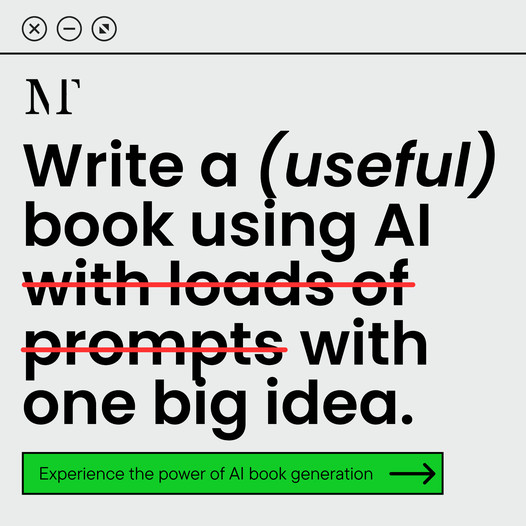The Role of AI in Writing
With tech zooming ahead, AI plays a huge role in the writing scene. Let’s dig into how AI writing tools have changed and why they’re now so crucial.
Evolution of AI Writing Tools
AI writing gadgets have come a long way, seriously shaking up how folks write nowadays. At first, these tools were only about checking grammar and little tips. But, over time, they’ve gotten way smarter. They now spit out ideas, suggest content grooviness, and fine-tune style by crunching heaps of data to get a grip on human lingo. Writers, whether they’re crafting novels or research papers, can’t do without these AI sidekicks.
We’ve seen a wild ride from basic spellcheckers to high-tech AI platforms that make putting words together a breeze. They speed up drafts and spruce up writing by catching grammar hiccups and style missteps (SciTechEdit).
| Year | Development |
|---|---|
| 2010 | Birth of grammar-checking add-ons |
| 2015 | AI-powered writing tips make a splash |
| 2020 | Cool tools for dreaming up content and buffing style |
| 2023 | Must-haves for teamwork and scholarly writing |
Importance of AI in Content Creation
You can’t really ignore how awesome AI tools are for boosting content making. They save loads of time by taking over basic chores like sorting out format and lists, giving writers more headspace for the tricky stuff (SciTechEdit). These tools chip in with on-the-spot editing, keeping writing smooth and uniform—super important for academic scribbling.
AI doesn’t kick humans out of the writing gig. Instead, it’s like a magic wand amping up their prowess. It hunts down and fixes pesky grammar and style slips, turning text into sleek, professional pieces. Plus, AI pals easily shift gears between different types of writing, making them handy for all writers. For those diving into sprucing up manuscripts, AI tools for manuscript editing offer a wealth of tips to make writing smoother and less of a hassle.
Types of AI Writing Tools
AI has taken the writing world by storm with a bunch of snazzy tools to help writers spruce up their manuscripts. Knowing the different AI writing tools can really help you pick what works best for your style.
Generative AI Tools
Generative AI tools like OpenAI’s ChatGPT are shaking things up in the writing scene. ChatGPT hit the ground running in November 2022 and changed how folks use AI for writing. These tools don’t just help you write—they’re in your corner for research and SEO too!
Ever wished your computer could spit out a paragraph based on a few words? That’s what these tools do. They work off the prompts you give them, cranking out everything from sentences to full chapters. Check out what they can do:
| Feature | What it Does |
|---|---|
| Content Making | Whips up text from a few prompts. |
| Brainstorm Buddy | Gives a hand in coming up with ideas and themes. |
| Style Tips | Offers better ways to polish up your prose. |
| SEO Help | Drops some keyword hints to get you noticed online. |
You might’ve heard of ChatGPT, Jasper AI, or Sudowrite. Writers love these because they supercharge creativity and make the workflow smoother than buttered toast.
Neural Network-Powered Tools
Neural network-powered tools, decked out with tech like GPT-3, can belt out natural-sounding text all on their own. They’re using a TON of data and smarts to craft their content.
 What Poetry Feels Like
What Poetry Feels LikeThese sleek programs soak up huge chunks of text to get the hang of human patterns. They’re like that friend who always gets you—understanding context and vibes. Here’s what they bring to the table:
| Feature | What it Offers |
|---|---|
| Fluent Writing | Comes out with smooth and fitting text. |
| Grammar Police | Sniffs out and fixes grammar slip-ups on the fly. |
| Writing Coach | Nudges you towards cleaner, crisper writing. |
Some classics in this camp are Copy.ai, Anyword, and Rytr.me; they’re perfect for writers polishing their work with some spiced-up language and style insights.
Writers hoping to up their game will find that diving into AI tools for manuscript editing can seriously boost how efficient and confident they feel about their writing and editing chops.
Applications of AI Writing Tools
AI writing tools are shaking things up in content creation for authors and businesses. They’re not just about getting things done faster; they actually make the whole writing gig a lot more efficient.
Business Use Cases
Companies are all about making life easier with these AI writing tools for everything from short tweets to long blog posts. Here’s what they’re up to:
| Application | Description |
|---|---|
| Social Media Copy | Whip up catchy content in no time. |
| Landing Page Writing | Craft persuasive words to boost sales. |
| Sales and Marketing Emails | Streamline outreach and sharpen messaging. |
| SEO-Optimized Blog Posts | Help in drafting articles that play well with Google. |
Shorthand talks about how these tools make it easy to handle more content than you could imagine. But, gotta admit, there are some issues like hitting creative snags and possibly getting stuff wrong.
Limitations and Challenges
AI writing tools are pretty helpful, but they come with some baggage that users need to keep an eye on:
- Lack of Creativity: AI often gives you the same-old, same-old when it comes to style, missing the spark a human can add.
- Potential Inaccuracies: Sometimes the facts aren’t spot-on, as AI might slip up on context or details.
- Over-Reliance: Lean too much on these tools, and it might stunt your own growth as a writer or thinker.
- Quality Control: Someone still needs to put eyes on AI’s work to pick up on mistakes and polish things.
AI’s a game changer for processes, but it shouldn’t replace the human touch. Writers should look at AI as a buddy helping out rather than a replacement.
In academic writing, AI is a handy partner in steps like strategizing searches, checking out titles, and summarizing finds (JCPP Advances). This shows why knowing what AI can and can’t do is crucial. You want to use these tools to your advantage without losing that personal vibe in your work. Curious about AI’s role in manuscript editing? Check out AI tools for manuscript editing.
Popular AI Writing Tools
So, AI writing tools are shaking things up in the world of writing and editing. They’ve made it way easier for writers to polish their work and even craft entirely new pieces of content. If you’re trying to figure out which tool suits your style, it helps to know what each one brings to the table.
Features and Functionalities
These AI tools come packed with a bunch of features that make writing smoother and faster. Here’s a scoop on what you can expect:
| Feature | Description |
|---|---|
| Predictive Text | These bad boys suggest words and phrases to keep your writing mojo flowing. |
| Grammar and Style Fixer-Uppers | They tidy up your grammar, punctuation, and style, giving your writing a clean and professional look. |
| Content Magic Makers | These guys whip up entire articles or sections based on your initial thoughts, helping you get the ball rolling. |
| Real-Time Editing | As you type, these tools throw suggestions your way, so you can polish up your draft without missing a beat. |
| Research Whizzes | They help put your research in order, gather data, and even sum up the findings for you. |
Whether you’re writing the next great American novel or prepping an academic paper, these tools have got your back. They’re pretty much a staple in today’s writing toolkit.
Selecting the Right Tool
Picking the perfect AI writing sidekick? Here’s the skinny on what to consider:
-
Why You Need It – Think about what you’re writing. Is it creative fiction, a thesis, or maybe a business proposal? Different tasks need different tools. Fiction writers might drool over tools that pin down narrative flow, while researchers might lean toward those automating brain-draining data hunts.
-
User-Friendly Vibes – Tools that are a breeze to navigate make life so much easier. Go for one with a setup that doesn’t give you a headache.
-
Plays Well with Others – Check if the tool can play nice with the stuff you already use, like your favorite word processor or project manager. Smooth sailing in the drafting to editing phase makes all the difference.
-
What’s the Damage? – Peek into pricing. Are you looking at a monthly subscription or a one-off buy? Tools like novelcrafter’s pricing guide spell it out, making sure it fits your wallet.
-
Get Help When You Need It – An active community and solid customer support can make hurdles feel more like hopscotch. Hit up places like novelcrafter help hub for tips and tricks.
-
The People Have Spoken – Go through reviews and comparisons like novelcrafter vs. other writing tools to see what real folks say.
With all these pointers, you’re more likely to pick out the best AI helper for your writing and make your process just about seamless. Happy writing!
AI Tools for Manuscript Editing
AI tools for manuscript editing play a crucial role in helping authors polish their work by fixing grammar, upping style, and making it all flow better.
Enhancing Grammar and Style
Meet some digital pals like Grammarly, Paperpal, and Writefull. Armed with natural language processing (NLP), they catch those grammar slip-ups and awkward sentence shuffles in your manuscript. These buddies are like having a grammar pro in your pocket, nudging you in the right direction as you type. No need to haul it over to a real-life editor for every tweak.
Here’s the lowdown on what some of them serve up:
| Tool Name | Key Features |
|---|---|
| Grammarly | Grammar patrol, style tips, keeping your tone right |
| Paperpal | Loves academic text, edits while you write |
| Writefull | Context-savvy hints, polishes your language |
| Instatext | Makes things sound simple, boosts clarity |
| AJE Digital | Aces academic manuscripts |
Each one brings its own magic to the table, helping authors tidy up their work in no time. And while something like Novelcrafter swings similar punches, the trick is to suss out which one dances best with your writing groove.
Automation in Research
ChatGPT-4o and its automation pals are all the rage for smoothing out the editing grind. They find those pesky grammar gremlins, offer clarity tweaks, and handle the boring copy-paste stuff, letting authors spruce up their manuscript sans sweat. Heck, these tools even dish out pointers on draft finesse and a bit of grammatical gospel (Word Stitch Editorial).
Even with these digital wizards, the hands of professional copyeditors still have a place at the table. Humans bring that flair for the subtle stuff where AI might stumble a bit. AI serves as a sidekick, bolstering the skills of human editors, and together, they make the editing ride smoother (Word Stitch Editorial).
Exploring AI tools for manuscript editing can flip the script on an author’s workflow, paving the way for top-notch writing without the hassle. For those keen on trying something new, giving AI-fueled writing tools a whirl could just be the ticket to unleashing fresh creativity.
The Future of AI in Writing
Writing has been around for ages, and like everything else, it’s got a makeover with the rise of AI. No longer just a pen and paper affair, it’s more digital and dynamic, with AI poised to play a bigger role in jazzing up how we whip up articles, novels, and more. So, what’s cooking in AI writing tech, and how’s it fitting into our writing routines?
What’s New and Fancy?
AI writing tools aren’t just about catching grammar slip-ups. They’ve gotten a lot smarter, and we’re talking mind-reading levels. Future tools might start tuning into our feelings and adding extra oomph to our writing. Add in tech like virtual reality, and you’ve just stepped into a world where writing isn’t only about words on a screen—it’s an experience. And if you’re tapping keys in niche areas like data journalism or academia, robots might soon be your best friend, guiding you step by step to make things easier and a tad more awesome. Check out some studies if you’re nerdy like that (Spines).
Plus, when you’ve got a bunch of folks pouring their brains into a single project, AI helps keep everyone singing from the same song sheet. It’s a lifesaver, especially if you’re all about the science and academia vibe.
| Cool Stuff | What’s It About? |
|---|---|
| Sensing Emotions | Gets the feels in writing |
| Mixing in Virtual Reality | Turn words into experiences |
| Boost in Data Journalism | Making sense of numbers and more |
| Style and Tone Consistency | Everyone’s on the same page |
Bringing AI into the Writing Scene
AI isn’t just about correcting commas anymore; it’s weaving itself into how we write and making things way smoother. Imagine you’re deep into research, and AI speeds up the tedious stuff like searching through endless documents, pulling out the good bits, and spitting out summaries. That leaves you more chill time to polish up the actual content.
Still not sold? AI steps in to scrub up grammar scuffs and make sure your text looks smart and tidy. This is super handy in serious writing, like for doctors or academics, so folks can focus on the story and not stress over syntax (SciTechEdit).
While everyone’s jumping on the AI train, keep in mind there’s an elephant in the room—how much input does the bot really have? Staying open about using AI in your writing is a biggie, especially as folks get smarter at spotting robo-writers (Word Stitch Editorial). With all these neat tools and tricks, AI’s helping turn our writing game up a notch, letting our creativity run wild.
Want to deep dive into nifty tools, or see how AI can jazz up your writing? Peep our resources on best AI tools for novel writing or get schooled on AI-assisted novel writing.


 Grab my poetry book, 'we're all just wanderers in the end' Here
Grab my poetry book, 'we're all just wanderers in the end' Here AD: Your Book Finally Written...
AD: Your Book Finally Written...